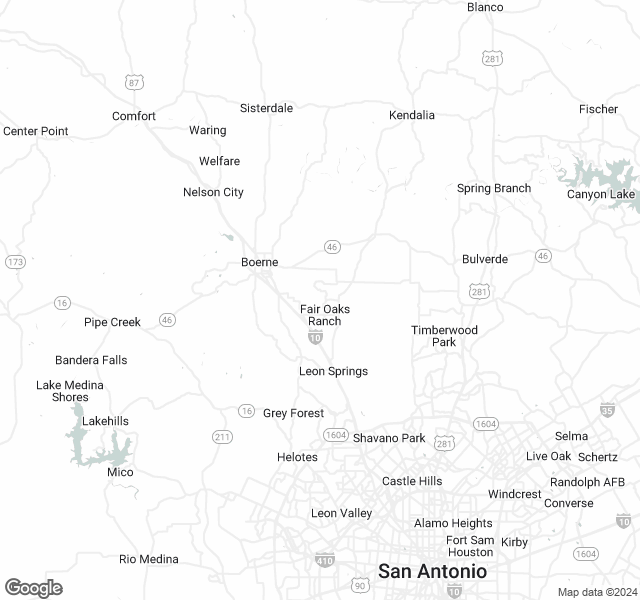How DirtMatch Works
Create a FREE Post
If you have excess dirt or fill, we'll match you with others in your area who need it. If you need dirt, we’ll match you with others who have dirt nearby. It’s that simple.
Connect with Matches
Once your DirtMatch post has matches, message your match directly on DirtMatch to finalize the details of your transaction: location, day/time, hauling etc.
Save Time & Money
You'll save thousands of dollars in disposal fees and trucking costs and countless hours by using DirtMatch to easily move your fill.
Free Fill Dirt in San Antonio
No Free Fill Dirt Found.
Check back later.
Dirt For Sale in San Antonio
No Dirt For Sale Found.
Check back later.
Dirt Dumpsites & Disposal in San Antonio
Dirt Haulers in San Antonio
-
Big bear hauling
San Antonio, TX
Pro Member -
Dirt Dept San Antonio/Austin
San Antonio, TX -
Stout Excavating Group, Texas LLC
Converse, TX -
Tradesman Quarry
San Antonio, TX -
Statewide Transport, LLC
San Antonio, TX -
Southern Horse Construction
San Antonio, TX -
HEC Express Kirby
Kirby, TX -
HEC Express Fischer
Fischer, TX -
Big Boy Hauling
Kirby, TX -
Beck Landfill
Schertz, TX -
Aggregate Haulers New Braunfels
New Braunfels, TX
Fill Dirt Suppliers in San Antonio
Fill Dirt Market Dynamics in San Antonio
At Dirt Match, post data from our customers in San Antonio suggest that the fill dirt market is influenced by the city's rapid expansion and diverse terrain. San Antonio's landscape, featuring a mix of flat plains and rolling hills, creates varied supply and demand dynamics for fill dirt. The fast-growing construction sector, driven by both residential and commercial projects, necessitates substantial amounts of fill dirt for site leveling and foundation stabilization. This high demand, particularly in urban areas, often increases the fill dirt cost, especially when specific types of dirt are needed to meet construction requirements.
Economically, our customers find that managing fill dirt costs in San Antonio requires strategic sourcing and efficient logistics. The demand for high-quality fill dirt, such as sandy loam and clay, is significant in new developments, making the timing and sourcing location crucial for cost management. Customers frequently ask "how much to dump fill dirt" as dump fees can vary widely depending on the volume and transportation distance. For those looking to buy fill dirt or topsoil for sale, staying updated with local listings and sourcing from nearby hilly areas can help minimize transportation expenses and ensure timely delivery. Effective management of these factors is essential for reducing the overall economic impact on construction and landscaping projects in San Antonio.
Common Fill Dirt Questions in San Antonio TX
In our experience, the average price for fill dirt in San Antonio, TX ranges from $10 to $25 per cubic yard, depending on the quality and source. Topsoil typically costs between $25 and $45 per cubic yard. Delivery fees can vary, often adding $50 to $100 to the total cost, depending on the distance and volume of dirt ordered.
San Antonio, TX primarily features clay, loam, and caliche soils. The region is well-known for its clayey soils, which can be challenging due to their density and poor drainage. Loam soils, which are ideal for gardening and landscaping due to their balanced texture and high nutrient content, are also prevalent. Caliche soils, containing a mixture of clay and calcium carbonate, are also common and can be quite hard.
We often see that permits are required for most grading and excavation projects in San Antonio, TX. You will need to contact the City of San Antonio Development Services Department to obtain the necessary permits. They provide guidelines on erosion control, site plans, and inspection requirements to ensure your project complies with local regulations.
Based on our latest inquiries, dump truck rates for hauling dirt in San Antonio, TX typically range from $70 to $90 per hour. Some companies may also offer flat rates, which generally start around $250 for a single truckload within a certain radius. Rates can vary based on the distance and the amount of dirt being transported.
In San Antonio, TX, you can dispose of excess dirt at several local landfills and recycling centers. Notable sites include the Tessman Road Landfill and the Covel Gardens Landfill. Each facility has its own guidelines and fees, so it's important to contact them directly for specific information. Additionally, some local recycling centers accept clean fill dirt for repurposing.
Yes, San Antonio, TX has specific restrictions on the use of soil, especially regarding contamination. It's essential to ensure that the fill dirt you use is clean and free from hazardous materials. Contaminated soil must be tested and treated according to state and local regulations. We recommend consulting with the Texas Commission on Environmental Quality for detailed guidelines.
You can get your soil tested at several local facilities in San Antonio, TX. The Texas A&M AgriLife Extension offers soil testing services. Additionally, there are private laboratories such as A&B Labs and SGS TEC Services that provide comprehensive soil analysis. Soil testing is crucial to determine nutrient levels, pH balance, and potential contaminants.
In our experience, the best times for dirt-related projects in San Antonio, TX are during the spring and fall. These seasons offer moderate temperatures and less precipitation, making it easier to work with the soil. Summer can be extremely hot and dry, while winter brings mild temperatures with occasional rain. Planning ahead for favorable weather conditions can ensure smoother progress.
